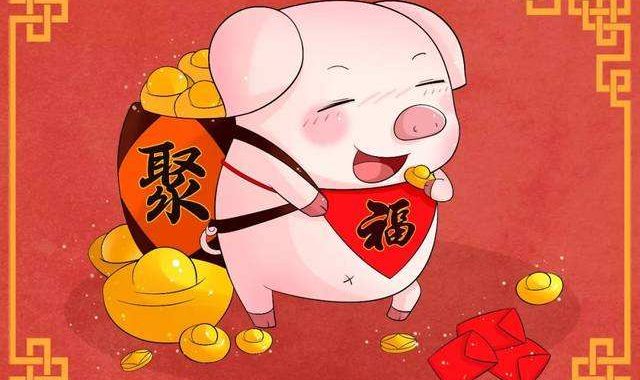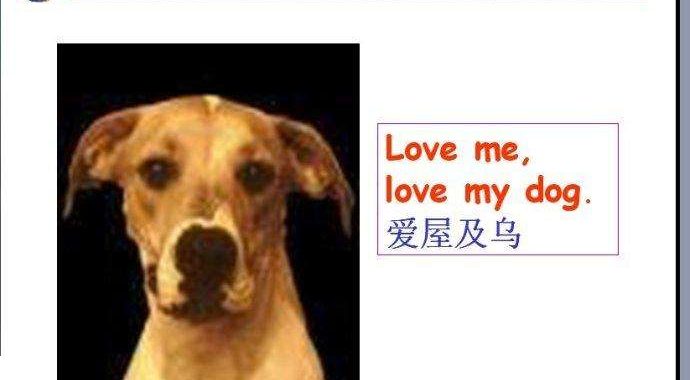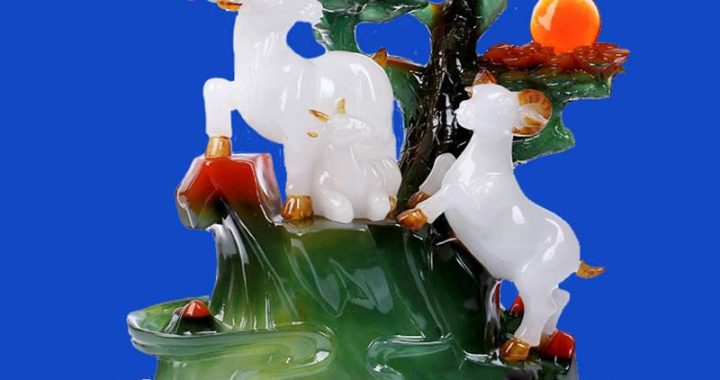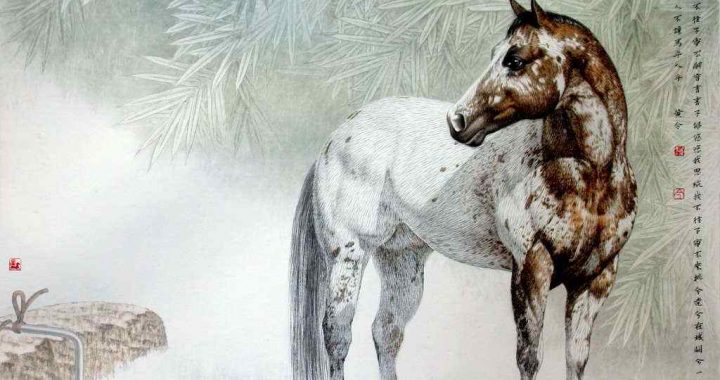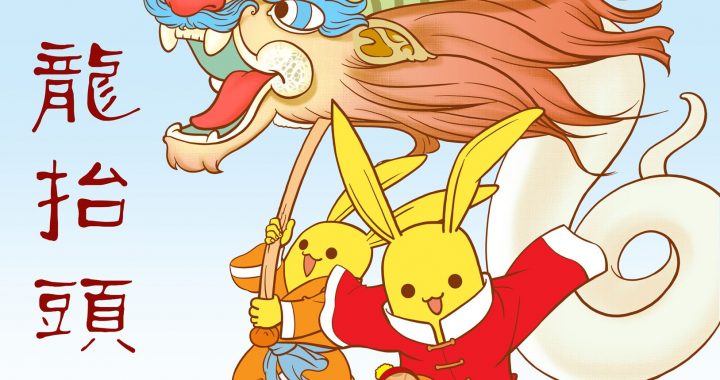Folk Arts in Daily Life Residential Building
5 min readChinese residential architecture also embodies original Chinese philosophy. The basic style for residential architecture in China is: horizontally following the five elements(metal, wood, water, fire, and earth) and the eight diagrams; vertically exhibiting sky-reaching and yin-yang matching. Whether it is cave or a house; it is of wood or brick structure; rammed earth construction or bamboo construction; it is all regarded as the entire entity of the universe. Living in it is to live in mother’s body of the universe. The same is true with residential building decorations.
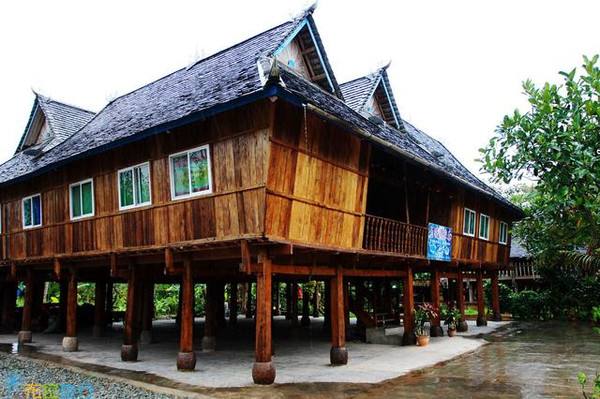
Pottery miniature courtyard among the burials during the Three Kingdoms Period (220-280) unearthed from Echeng, Hubei, showing ancient Chinese residential building in a five elements and eight diagrams style.
Residential building featuring four quarters with a center skylight to represent the five element universal view in Kunming, Yunnan.
Horizontal style architecture-The five elements and the eight diagrams. In northern China, houses are built in courtyard style, or quadrangle; and in southern China, houses feature”Bamboo structure with skylight in the center.” Both styles embody the philosophy that the universe consists of four sides and five elements around one center. The same layout of square bricks in a rotating pattern is seen on the screen wall in the quadrangle courtyard in Beijing; as well as in the three-room and a screen wall style house in Yunnan.
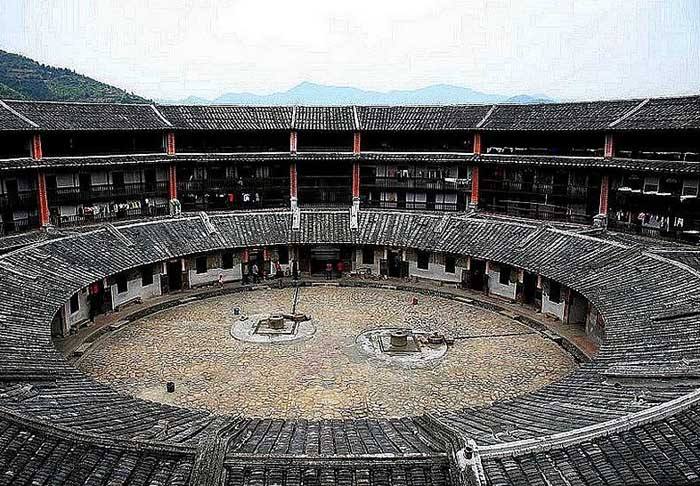
Vertical style architecture–The vertical pillar in Chinese traditional wood structure building is a sky-reaching symbol that connects heaven and earth. Its base is earth, in the form of a stone drum or a golden melon symbolizing mother’s body-the origin of life, and the top crossbeam is the sky.
A side view of Chinese residential house with a cultural symbol of yin-yang mating to reach the sky (Dengfeng, Henan).
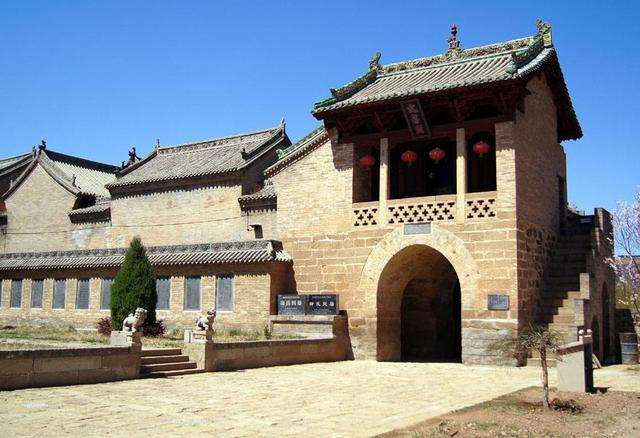
The yin-yang view in house building is shown in two yin-yang pillars heading down towards earth and crossing tails at the ” sky beam.”It is the same concept as the view on dragon totem that yin-yang dragons having their heads on earth and mating in heaven. The closure of the building is the connecting point of two dragons. A rite of worship is held on the closing day and an eight diagrams graphic is pasted over the closing point. pair of crossing chopsticks is placed on top, forming a symbol of perpetual life, with a black cloth rooster in the center as the symbol of the sun.
Residential building decoration-In northern China where people idolize fish and dragon, the two pillars in residential house are made in the form of yin-yang dragons with heads down and tails up crossed at the sky beam. In southern China, they are in the form of two phoenixes and in Yunnan among Yi and Bai ethnic groups, they are yin-yang tigers. Dai ethnic group who idolizes peacock and elephant, the two pillars are in the form of peacocks. decorative symbol in the center of the sky beam as the “central flower” is a universal cultural code of Chinese architecture.
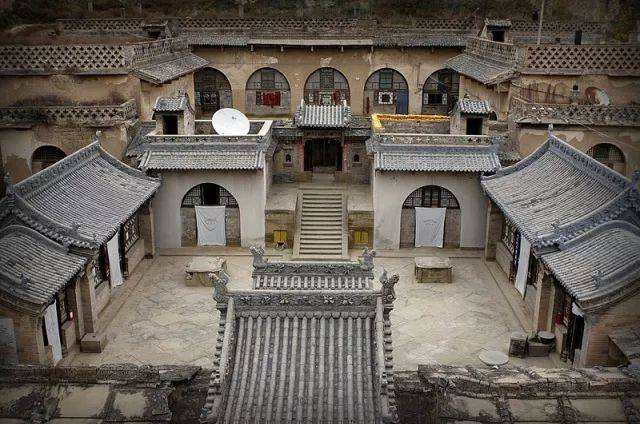
The “central flower”is made in a variety of forms. In the Yangtze River valley, it is a four-pedal evergreen flower made with four inverted tiles, a prototype of bamboo style architecture from Hemudu Culture The “central flower” in Anhui, Jiangxi, Hunan, Sichuan, Guizhou, and Yunnan are made with three titles shaped into a Chinese word “pin,” known as”three letter stack,”or”three hats.” It is believed that such symbol keeps away the evil spirits and provides safety at all seasons. There is also “coin flower or “gourd flower. “Yi and Bai ethnic groups in Yunnan Province are black or white tiger totem lovers. Their symbol on the sky beam center is a tile cat.
An architecture symbol of two mating yin-yang peacocks on a Dai ethnic group building in Xishuangbanna, Yunnan. Dai national idolizes peacock totem.
Recently people found that in Anhui Province, a plane view of a boat-shaped housing complex was a symbol for character “Gui,” symbolic of family prosperity. “Gui ” is vertical philosophy symbol as reaching the sky. It is very rare to use vertical symbol in place of a horizontal symbol in Chinese residential architecture.
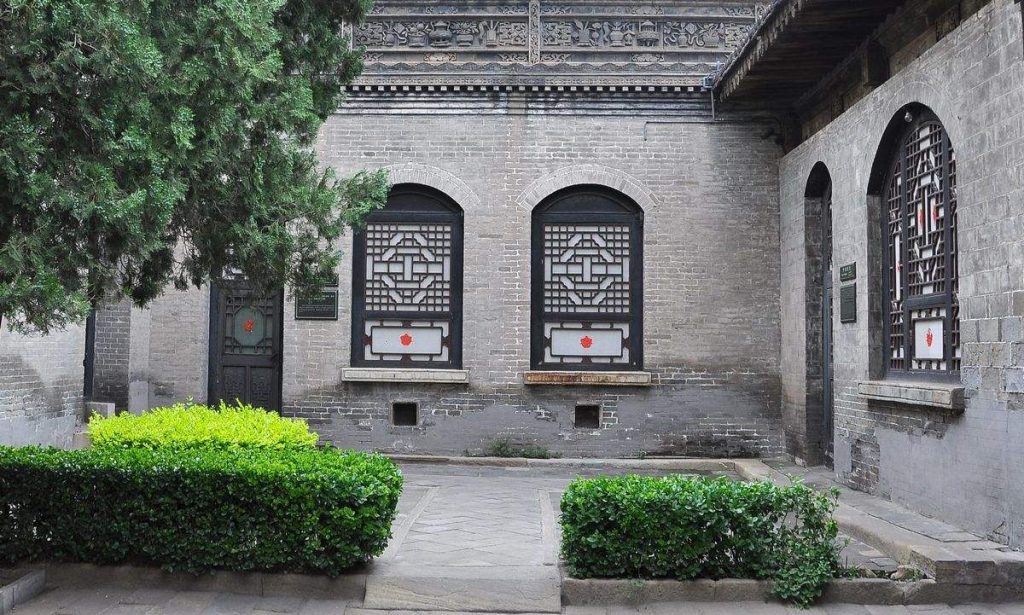
From the north to the south, Chinese wood carving window frame for residential house vary a great deal. However, its theme remains the same at all time. In Zhejiang, Fujian, Jiangxi, Anhui and northern Shanxi, folk artists created a variety of decorative animal figures and folk stories in wood carving window frames, with superb craftsmanship, which, coupled with a wide range of brick carving and stone carving art works, forms complete folk fine art series in residential architecture.
On the Loess Plateau of northern China cave is the residential house for the local people. The vault of the cave is considered the sky, and the floor is earth. To live under the round sky and on square earth is to live inside mother’s body of the universe. The facade is the wood structure portion with an arched door and window. Above the middle cross bar is considered the sky, and the middle lattice is sky window,with slanting lattices on the left and the right. Below the cross bar is the 36 lattice as a symbol of the universe. At Chinese New Year, a large paper-cut of a red “rotating flower”is pasted in the center of the sky window; and a totem animal in the middle of the 36 lattice, with four corner flowers making a diamond square “36 lattice windows of clouds. This is a theme art work featuring perpetual life in residential architecture.
The cave door is also fully decorated. The threshold is earth, and the cross bar lintel is the sky. Two raised carving objects in round, rotating pattern on the cross bar are symbols of the sun and the moon. There are two animal stone blocks sitting at each side of the door. At times, it is hard to select a perfect geographical spot and the cave is built with a view of uneven mountain passes from afar. As this was considered a vicious sign by the locals, the owner of the cave would need to forge a stone cylinder to set up in front of the cave door for safeguard. However, this safeguard device was later used to tie up donkeys or horses, and became known mistakenly as the”horse stake.” The stone cylinder is often decorated with auspicious patterns like”Eight men bringing in treasures, “Monkeys eating peaches.”With its simple, unpretentious style and a variety of designs, it has become known as the horse stake art series.
